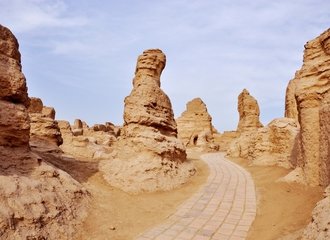Is it safe for kids to travel to Tibet?
Traveling to Tibet can pose challenges, especially when accompanied by children. While it's generally safe to journey with kids, it's advisable not to with children under seven or eight years of age. Tibet, often referred to as the "Roof of the World" due to its high altitude, poses risks of altitude sickness, which children might struggle to recognize in themselves. Therefore, it's recommended to avoid extremely high-altitude locations like Everest Base Camp or Ngiri.
When contemplating a trip to this elevated region with kids, several considerations such as acclimatization, safety, food, and accommodation are paramount. Let's explore each of these aspects to gauge the safety of traveling to Tibet with children.
Acclimatization
Tibet's average altitude exceeds 4,000 meters (13,000 feet). High altitude is typically considered between 1,500-3,000 meters above sea level, which means the altitude in Tibet often falls under the categories of "very high" and "extreme." At these elevations, the oxygen content is only about 60% of what we're used to at sea level. Acute Mountain Sickness (AMS) is a genuine concern, and both children and adults are at risk.
Recommendations:
- Travel from Mainland China to Lhasa by train or car to acclimatize gradually.
- Spend at least two days in a lower-altitude city (like Lhasa) before proceeding to higher regions.
- Drink ample water and refrain from vigorous activities during the initial days.
- Always have oral rehydration salts on hand.
- Consult a pediatrician before the trip and consider bringing prescribed medications to address possible symptoms of AMS.
Best Time to Visit Tibet with Kids
The best time to visit Tibet with kids spans from April to October, with the peak tourist season falling between June and September. During these months, the weather is warmer with clearer skies, making it perfect for sightseeing and trekking.
However, for those who prefer a less crowded experience, the shoulder months of April, May, or October are ideal. Just be ready for some unpredictable weather changes. Traveling to Tibet with kids during the winter months is generally not advised, although Lhasa is an exception. The capital can be visited year-round, and for a more enriching experience, consider timing your trip to coincide with Tibetan festivals, allowing you to immerse in the local culture and traditions. It's worth noting that many places in Tibet experience harsh cold conditions in winter.
Always keep in mind local travel regulations and the need for altitude acclimatization when planning your journey.
Food
Tibetan cuisine mainly features barley, meat, and dairy products. While trying local dishes like Tsampa or momos can be an exciting culinary adventure, children might find the flavors a departure from their regular meals. Thankfully, more familiar Western foods are available, such as Chinese noodles and a typical American breakfast. Lhasa and its surrounding areas offer a variety of restaurants, but when venturing further into Tibet, Tibetan cuisine might be the predominant or only option. Hence, it's a good idea to pack familiar snacks, dried fruits, nuts, and high-energy foods for the journey.
Boiled water is widely available. If boiling isn't an option, ensure the water is purified before consumption. It might also be prudent to carry bottled water. Seek recommendations from your tour guide on restaurants that serve a diverse range of cuisines, especially since most larger towns are likely to have such establishments.
Accommodation
Tibet's tourism has surged in recent years. Major cities like Lhasa and Shigatse now offer a wide range of accommodations, from luxury hotels under renowned chains to budget stays, all of which are suitable for families with children. However, options might be more limited in remote areas.
What to Pack When Traveling with Kids in Tibet
Packing for kids can be a challenge, no matter the destination. You'll always find yourself needing something more or extra for them.
Ensure you pack warm coats, even if you're traveling in summer. The temperature can fluctuate greatly, with hot days and significantly cooler nights. If trekking is on the agenda, layered clothing is key: pack everything from t-shirts to warm attire. Also, don't overlook comfortable shoes.
A first aid kit is crucial. Include any medicines your pediatrician recommends, and stock up on oral rehydration salts for potential dehydration. Other essential items are medications for nausea, diarrhea, and headaches, as well as cold medicine and bandages.
Given Tibet's high altitude, the sun's UV radiation can be especially strong in the summer. Since children have delicate skin, a high-SPF sunscreen is vital.
To keep your kids entertained, bring along their favorite toys and books. And remember: children also require a Tibet Travel Permit.
Places to Visit in Tibet with Kids
Lhasa is a city rich in cultural and historical significance. Kids are often fascinated by the bustling Barkhor Street. Other notable sites that can captivate both young and old include the Potala Palace, Jokhang Temple, Sera Monastery, Drepung Monastery, and Norbulingka Palace.
Indeed, most Tibetan monasteries and palaces are worth a visit. The Tibet Museum can also be engaging for kids, offering insights into Tibet's culture and history.
Lastly, consider taking them to Namtso Lake and Yamdrok Lake. If they're acclimated to higher altitudes, a trip to the Everest Base Camp could be on the cards.
Safety
Tibet is generally safe for travelers, so concerns about crime, especially when with your children, are minimal. The crime rate is notably low, and Tibetans are renowned for their hospitality.
Conclusion
Traveling to Tibet with children is largely safe. Whether you're journeying with kids or on your own, proper preparation and taking necessary precautions can ensure a secure and stress-free trip.
Traveling with children can indeed be challenging, but it also offers an exhilarating experience. It's paramount to be well-prepared, stay vigilant about potential hazards, and always prioritize your child's comfort and well-being.
For an optimal experience in Tibet, we recommend partnering with a local travel agency and utilizing the expertise of a local guide. Explore our Tibet tours for more information.






















